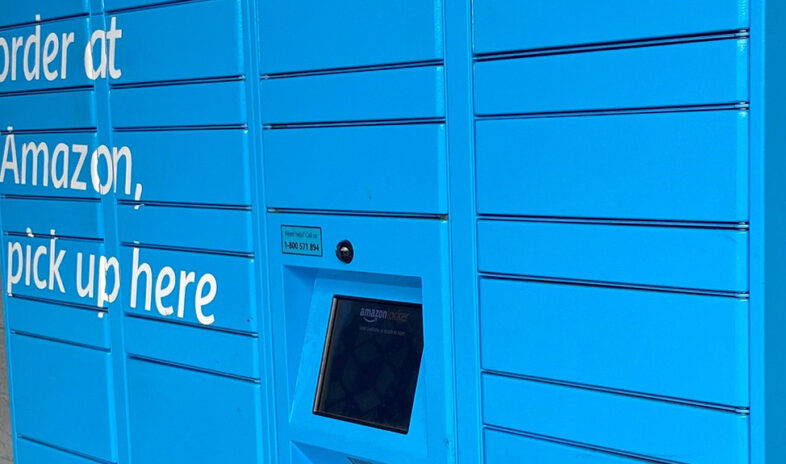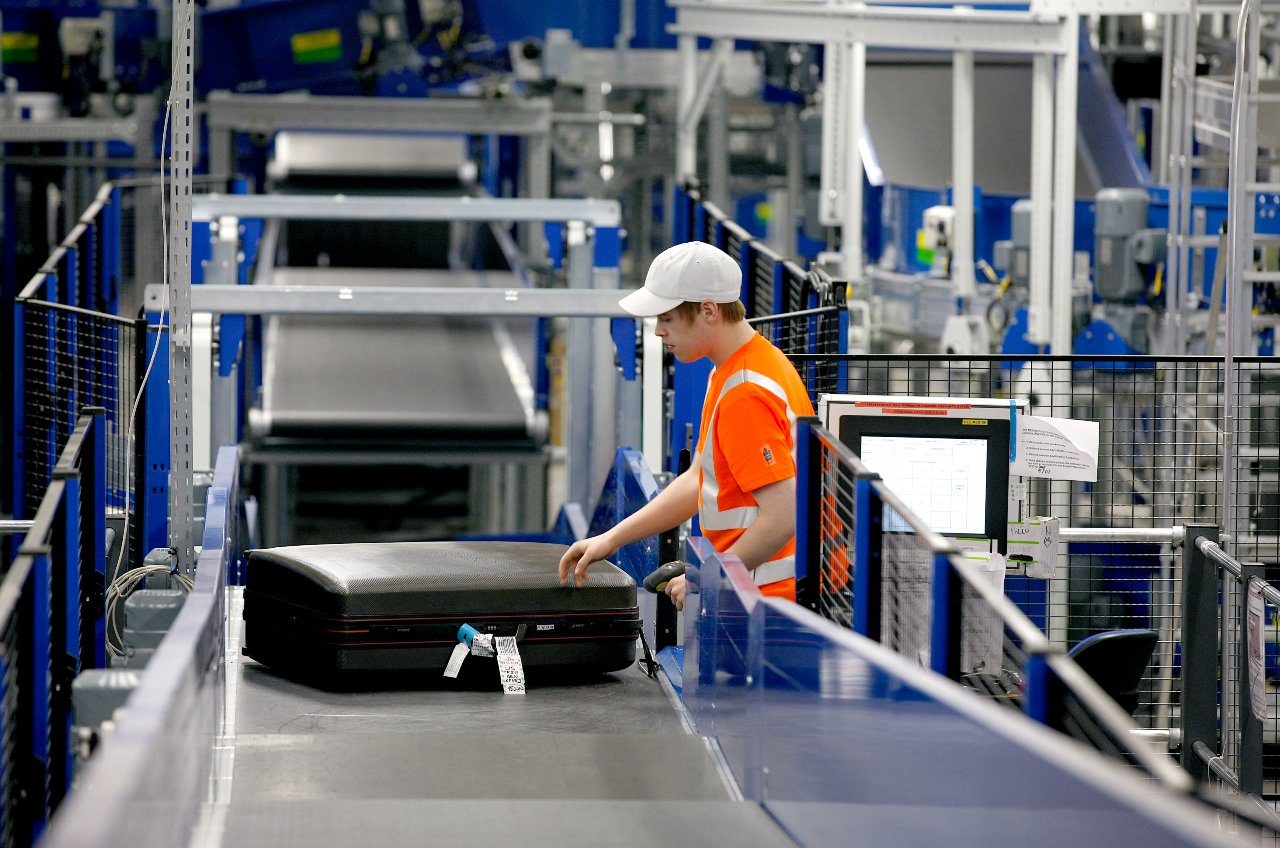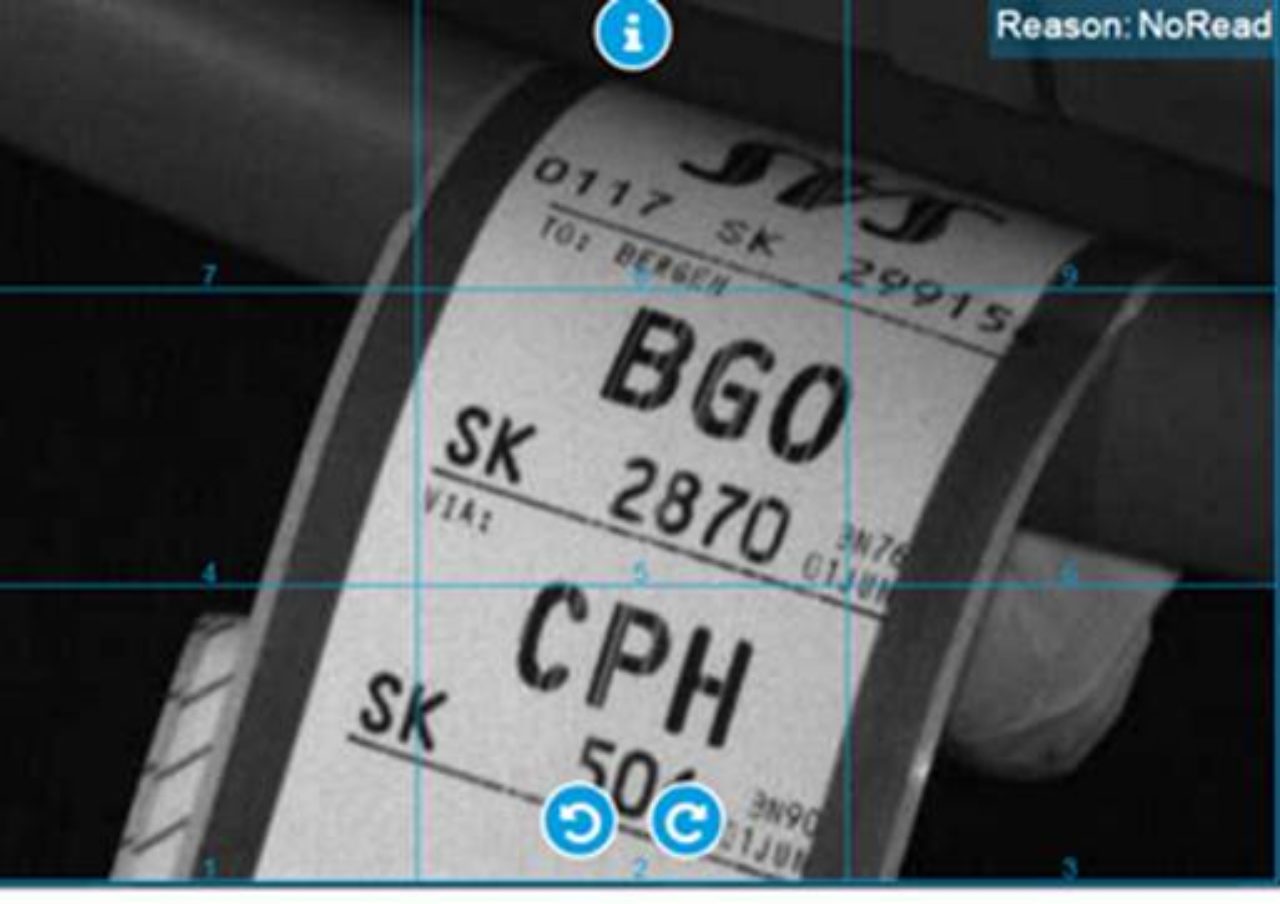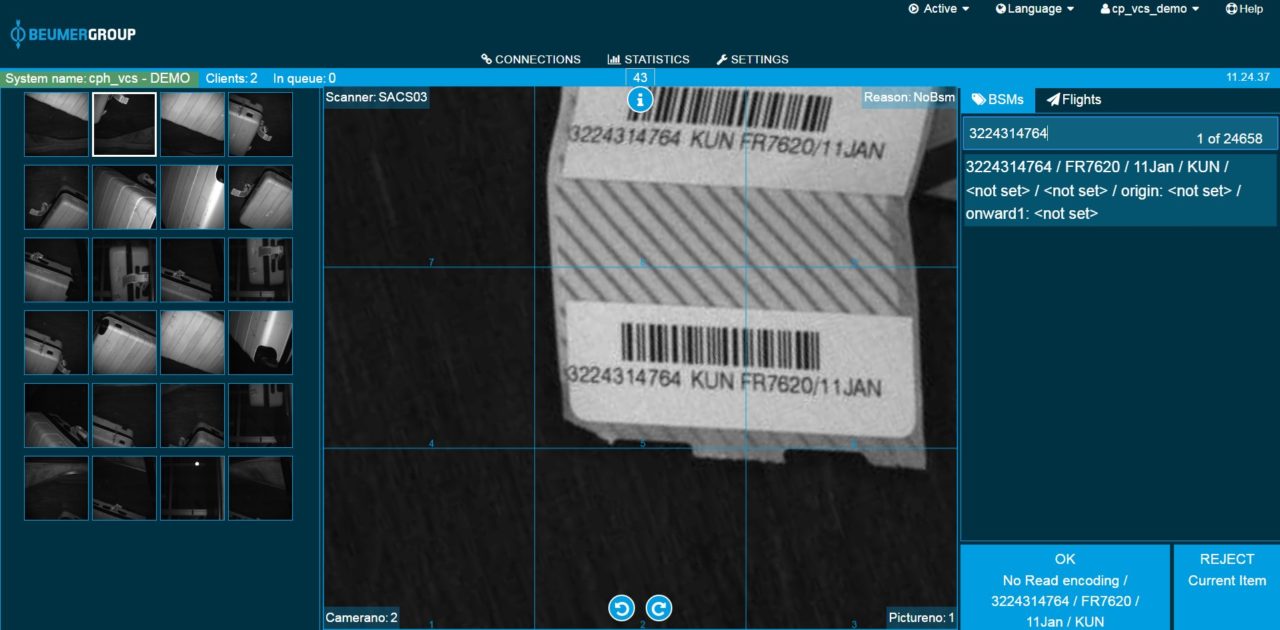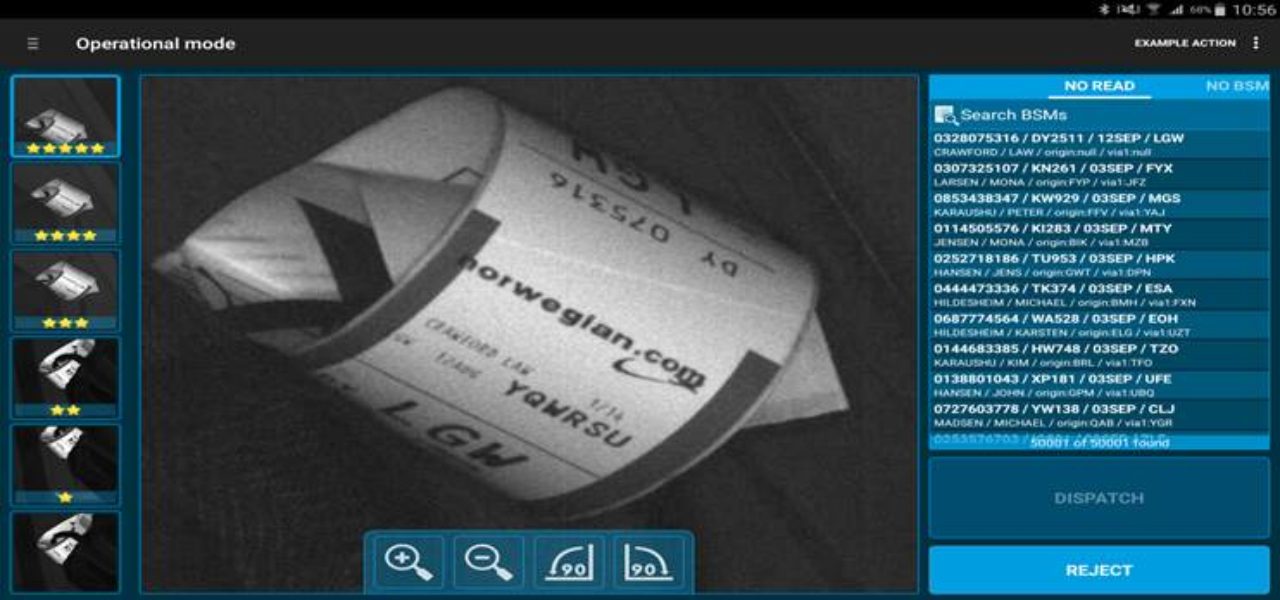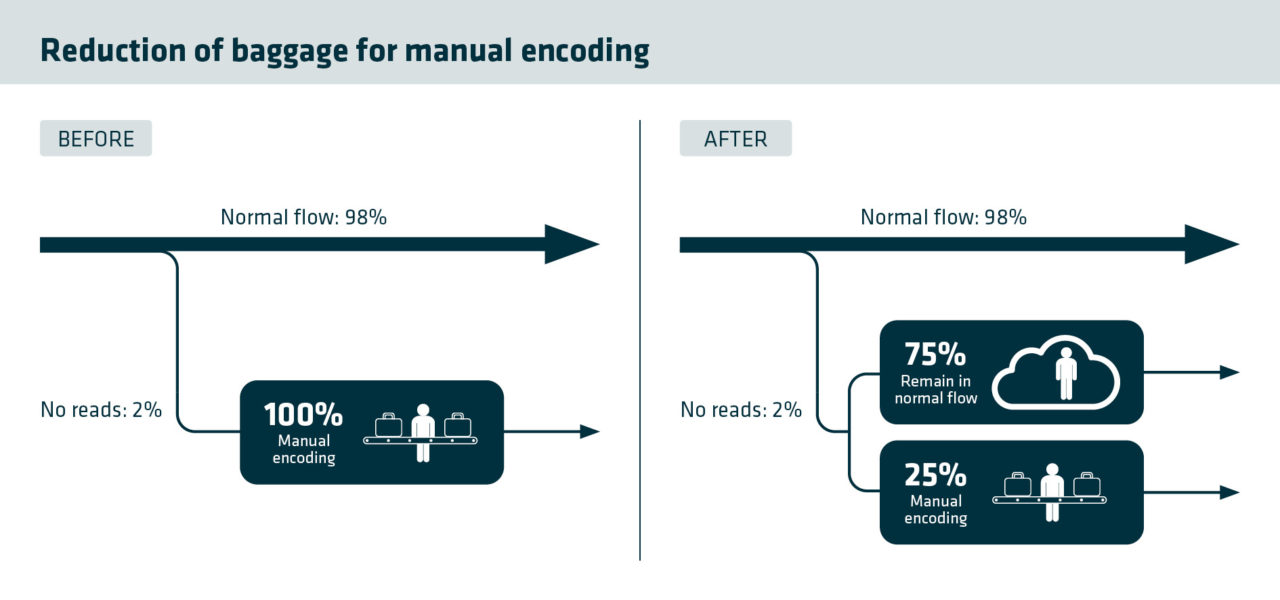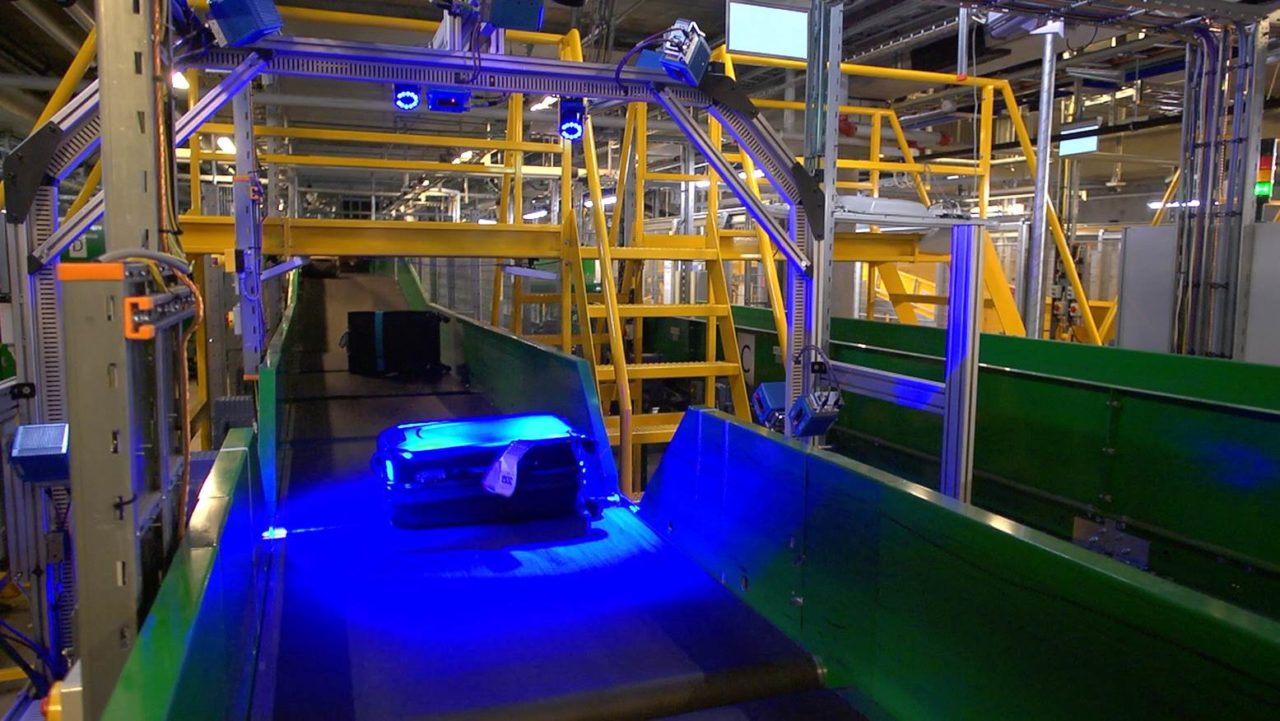It’s worth noting that VCS can be integrated seamlessly with Optical Character Recognition (OCR) systems, both at the initial installation of the system or at a later stage. OCR adds another dimension to the encoding process by further increasing the speed of processing unreadable tags. OCR technology is similar to VCS in that images are also captured of the unreadable tags. But it’s the system that analyses the contents of the tag, through letter and word recognition, and not the operator.
The upside of VCS
The business case for introducing remote encoding with VCS into an airport’s BHS is very solid, given its many upsides.
Less bags exiting the loop
A distinct advantage of VCS technology is that it eliminates the need for bags to be diverted to a manual encoding station and keeps them in motion within the BHS throughout the encoding process. The flow-on effect of this is that VCS removes the need for operators to physically turn or lift bags, so can improve the overall work environment. VCS also minimises the bottlenecks that can occur during peaks.
A fallback solution
Another positive aspect of VCS is that it can serve as a fallback response should there be a failure in the departure controls system. This type of system malfunction can mean the system will not receive the baggage source messages. But additional staff can be deployed to VCS to encode the tags remotely to keep the bags moving and prevent bottlenecks or short-shipped baggage.
Download the whitepaper: “Video coding as remote encoding technology in baggage handling.”


